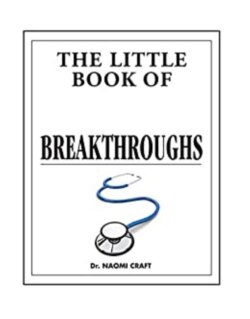Читать книгу The Little Book of Medical Breakthroughs - Dr. Naomi Craft - Страница 22
На сайте Литреса книга снята с продажи.
1809 Women Medical Students Miranda Stuart (1795–1865)
ОглавлениеUntil quite recently, there was considerable prejudice against allowing women entry to medical school. Determined that she was going to succeed in her wish to train as a doctor, Miranda Stewart resorted to dressing up as a man in order to gain a place.
Miranda Stuart enrolled in the University of Edinburgh’s medical school in 1809, 36 years before Elizabeth Blackwell (1821–1910) got a place to study medicine in America.
Stuart (aka James Barry) qualified in 1812 and became an Army Surgeon in 1819, where she rose to the most senior rank of Medical Inspector. Although she was criticized by Lord Albermale for ‘a certain effeminacy’ in her manner, she kept the pretence going until her death, when her secret was uncovered.
Women have not always had so much difficulty in gaining acceptance in medicine. In Ancient Egypt there were many female students and doctors, but gradually it became less acceptable, and by the Middle Ages it was not possible. In fact, in 1421 a petition was presented to the English king Henry V (1387–1422) to prevent women from practising medicine – the historical equivalent of protecting jobs for the boys. Women continued to work as midwives until the 19th century, when men took over that role too with the emergence of obstetrics and gynaecology as a specialism.
Elizabeth Blackwell was the first woman to be accepted to medical school without pretending to be a man. She was born in England but moved to the United States as a small child. She became a teacher in a school set up by her mother after her father died, but she found it boring and uninspiring. Once she had decided to train as a doctor she applied to more than 15 medical schools before being accepted at a small one in Geneva, New York. Despite being ostracized and harassed by her fellow students, she qualified in 1849, with top marks in her class.
In the United Kingdom, the first group of women medical students were known as the Edinburgh Seven. They campaigned long and hard to be allowed to study medicine at the University of Edinburgh and they won in 1869, when they were allowed to attend. However, a legal challenge in 1873 meant that they were not awarded their degrees.
Over time, women-only medical schools were opened. However, doctors who qualified here found it hard to get employment anywhere except in one of these schools. Prejudice was still entrenched, and many men had strong views on the subject. In 1905 the President of the Oregon State Medical Society, Dr Van Dyk, wrote that educated women ‘could not bear children with ease because study arrested the development of the pelvis’.
Even when women were eventually allowed to enter medical schools the opposition continued, with comments that women doctors were ‘emotionally unstable’, ‘talked too much’ and ‘got pregnant’. A dean of one school claimed he would prefer a ‘third-rate man to a first-rate woman doctor’.
Things have moved on gradually, and although the percentage of women in medical schools was still only about six per cent in 1950, it has risen steadily. In the United Kingdom the proportion of women medical students exceeded 50 per cent in 1991, and has continued to rise ever since.
